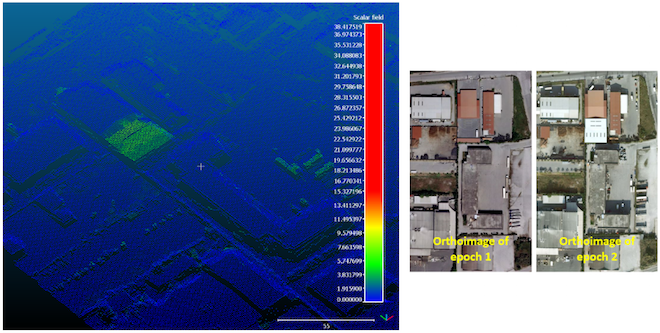 For the epoch 1, an orthoimage (produced by high resolution RGB digital aerial imagery that derived at 11 May 2014) with a ground sample distance (GSD) of 10 cm as well as a LiDAR point cloud with a density of 4pts/m2 (derived at 2 May 2014) are used. On the other hand, for the epoch 2, an orthoimage (produced by high resolution RGB digital aerial imagery that derived at 18 November 2015) with a GSD of 10 cm as well as a point cloud produced by dense image matching techniques with a point density of 1 m are used. Sophisticated image based as well as point cloud based chance enhancement techniques were implemented to achieve accurate and reliable results. fig2. The point cloud based change detection results |